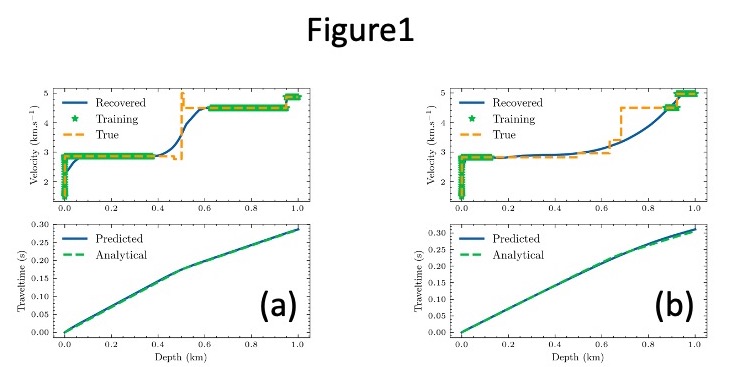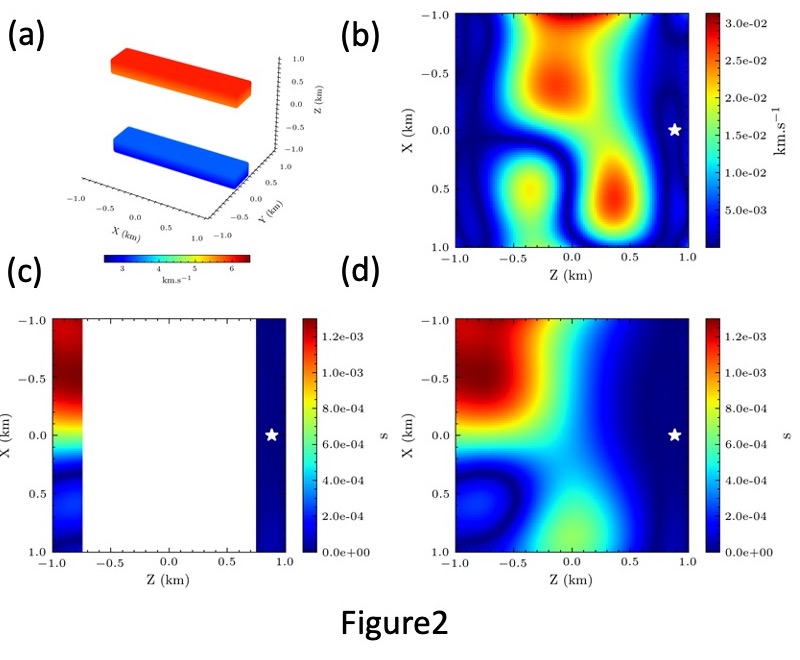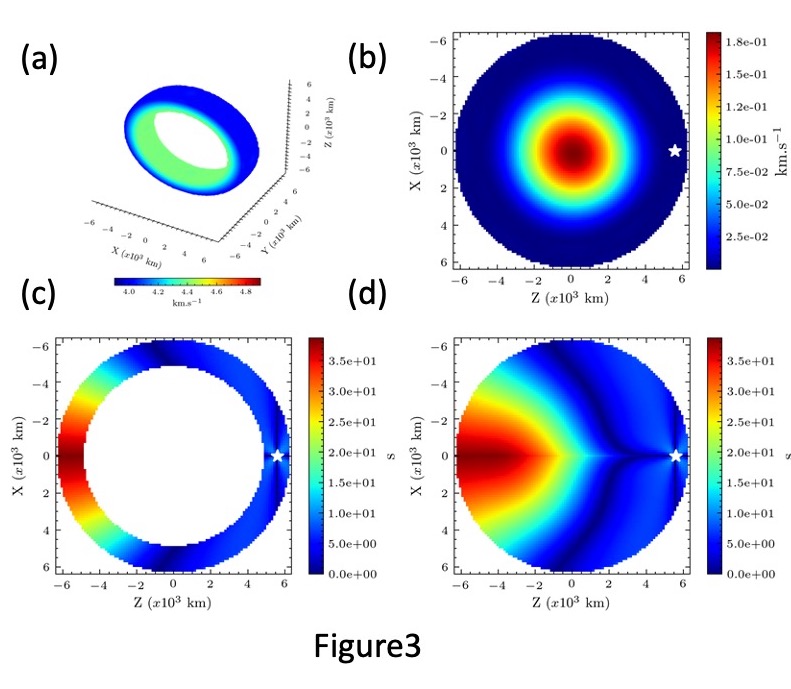Upwind, No More: Flexible Traveltime Solutions using Physics-Informed Neural Networks (Taufik, M. H., Waheed, U. B., and Alkhalifah, T., 2022)
There have been numerous attempts to solve the eikonal equation, which can be broadly categorized as finite-difference and physics informed neural network (PINN) based approaches. While the former has been developed and optimized over the years, it still inherits some numerical inaccuracies and also scales exponentially with the velocity model size. More importantly, it requires upwind calculations to satisfy the viscosity solution. PINNs, on the other hand, has shown great promise due to several features allowing for higher accuracy and scalability than conventional approaches.
We demonstrate a unique feature of PINNs solutions, specifically its flexibility resulting from the global nature of the neural networks functional optimization, allowing for functional gradients referred to as automatic differentiation. We highlight an important aspect of using our modelling scheme: overcoming the inability of conventional methods to handle large areas of missing information (gap) in the velocity model. We find empirically that the PINNs interpolation-extrapolation capability enables us to circumvent a scenario when traveltime modelling is performed on velocity models containing gaps. Such a capability is crucial when performing traveltime modelling using the global tomographic Earth velocity model.

Figure 1: Traveltimes and their respective velocities for one-dimensional (1-D) velocity models for various gap sizes. For each experiment, the source is located on the surface (Z = 0 km) and the gap is centered at Z = 0.50 km with two different gap sizes.

Figure 2: Input, recovered velocity, and traveltime accuracy (compared to analytical solutions) for exploration scale synthetic tests. The grid size is 101 x 101 x 101 with a point source (white star) located at X=0 km, Y=0 km, Z=0.88 km.

Figure 3: Input, recovered velocity, and traveltime accuracy (compared to FMM solutions) for global scale synthetic tests. The grid size is 101 x 101 x 101 with a point source (white star) located at X=0 km, Y=0 km, Z=5,574 km.
References
Taufik, M. H., Waheed, U. B., and Alkhalifah, T., 2022, "Upwind, No More: Flexible Traveltime Solutions using Physics-Informed Neural Networks", submitted to the 83rd EAGE Annual Conference and Exhibition.
Taufik, M. H., Waheed, U. B., and Alkhalifah, T., 2022, "Upwind, No More: Flexible Traveltime Solutions using Physics-Informed Neural Networks", submitted to the 83rd EAGE Annual Conference and Exhibition.